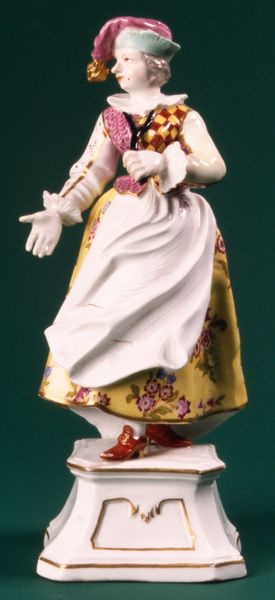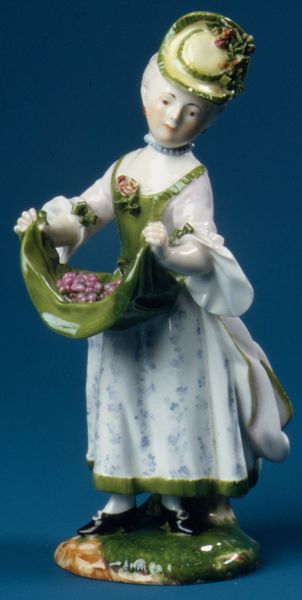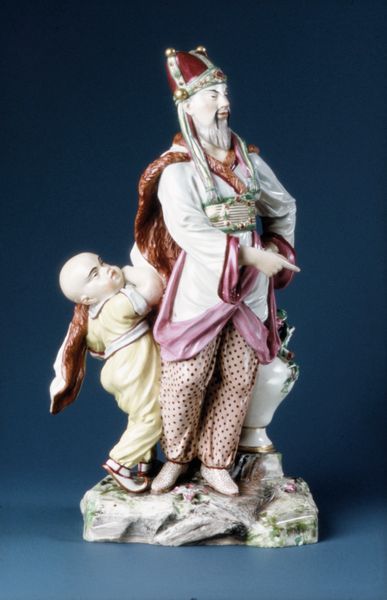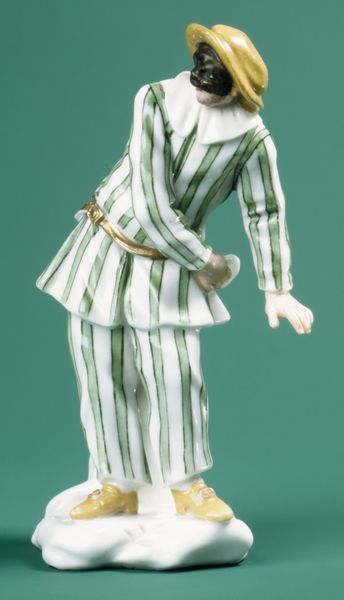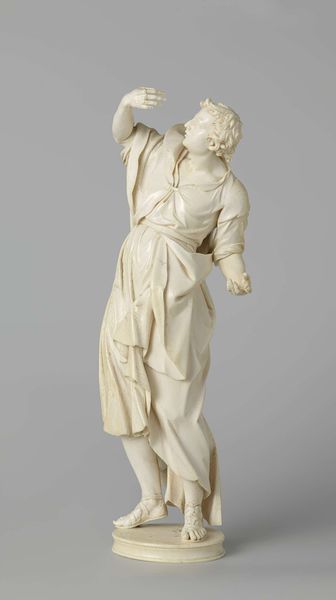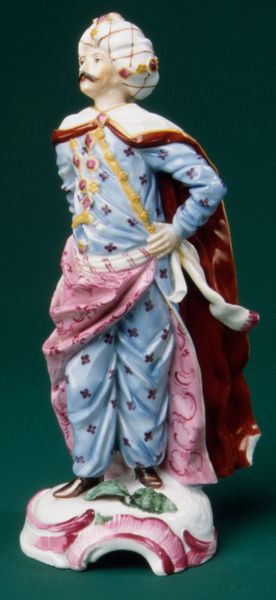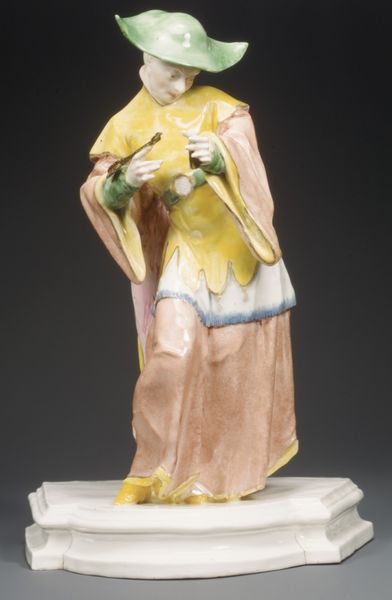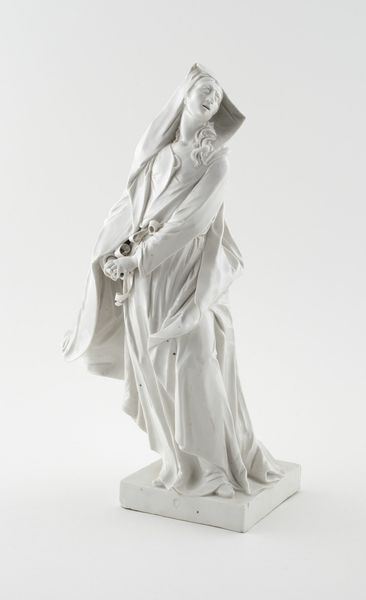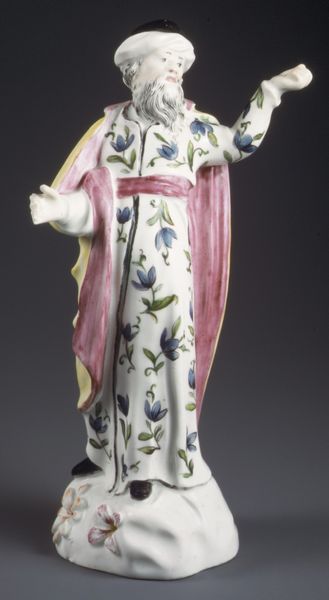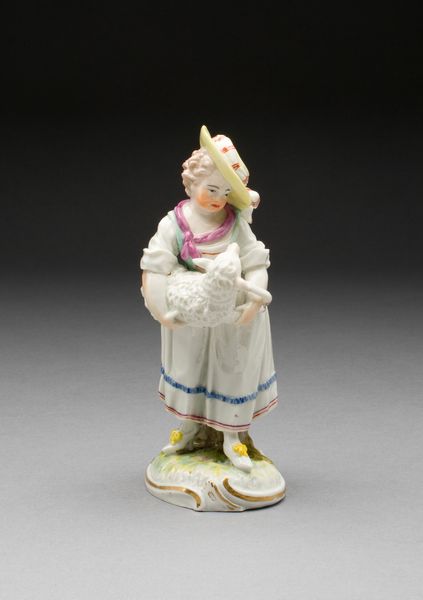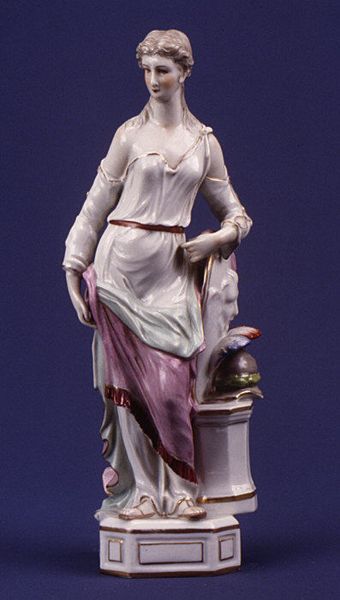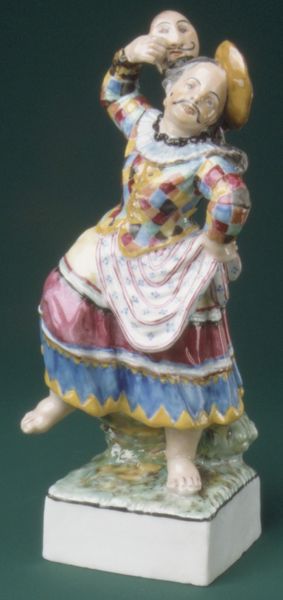
ceramic, porcelain, sculpture
#
sculpture
#
ceramic
#
porcelain
#
sculpture
#
decorative-art
Dimensions: Height: 7 1/4 in. (18.4 cm)
Copyright: Public Domain
Curator: Standing before us is “Seamstress,” a porcelain sculpture created sometime between 1745 and 1755 by the Capodimonte Porcelain Manufactory. Editor: The first thing that strikes me is the overwhelming whiteness of the figure; it nearly neutralizes the subtle hues in her garment. There’s also something slightly off in its symmetry, in the balance between the right and left sides of the work. Curator: That visual imbalance is certainly worth exploring. Note how the sculptor meticulously detailed the folds and textures of her dress and kerchief. Observe, too, the contrasting linear elements of the multi-striped apron which creates a counterpoint to the overall curves. Semiotically, the kerchief implies a containment, both literal and psychological, which contributes to the statuette’s sense of feminine duty. Editor: It's tempting to situate this sculpture in relation to the burgeoning Rococo aesthetic, and explore the patronage networks that propelled the popularity of porcelain sculpture. Who was purchasing these pieces, and where were they displayed? Were these expressions of wealth intended for intimate enjoyment or a broader public display of refinement? Curator: Well, considering the delicate modeling, it is interesting that a humble subject was chosen. There are multiple signifiers here: a kerchief, the basket of sewing accouterments, the apron--but is it truly representational? One must ask, are these merely fashionable class markers, a coy reference for bourgeois tastes? Editor: Right, class anxieties would have informed the production of objects like these. Did the seamstress represent aspiration, the fantasy of tasteful employment? Curator: Her posture is very active, she is looking toward one side. What narrative might this create for its audience? A sense of expectation, that she may turn to deliver something from her sewing kit? There seems a focus on dynamic balance that is lacking in similar, older statuettes. Editor: Understanding the networks and viewership reveals the larger economic structures propping up this sculpture—a small, discrete sculpture of female labor manufactured for male capital. It certainly asks as many questions as it answers. Curator: True enough; thank you for lending me your sociological perspective. It sheds more light on our appreciation of the object's nuances. Editor: A worthwhile inquiry, thank you. This sculpture reminds us how social contexts influence form and meaning.
Comments
No comments
Be the first to comment and join the conversation on the ultimate creative platform.
